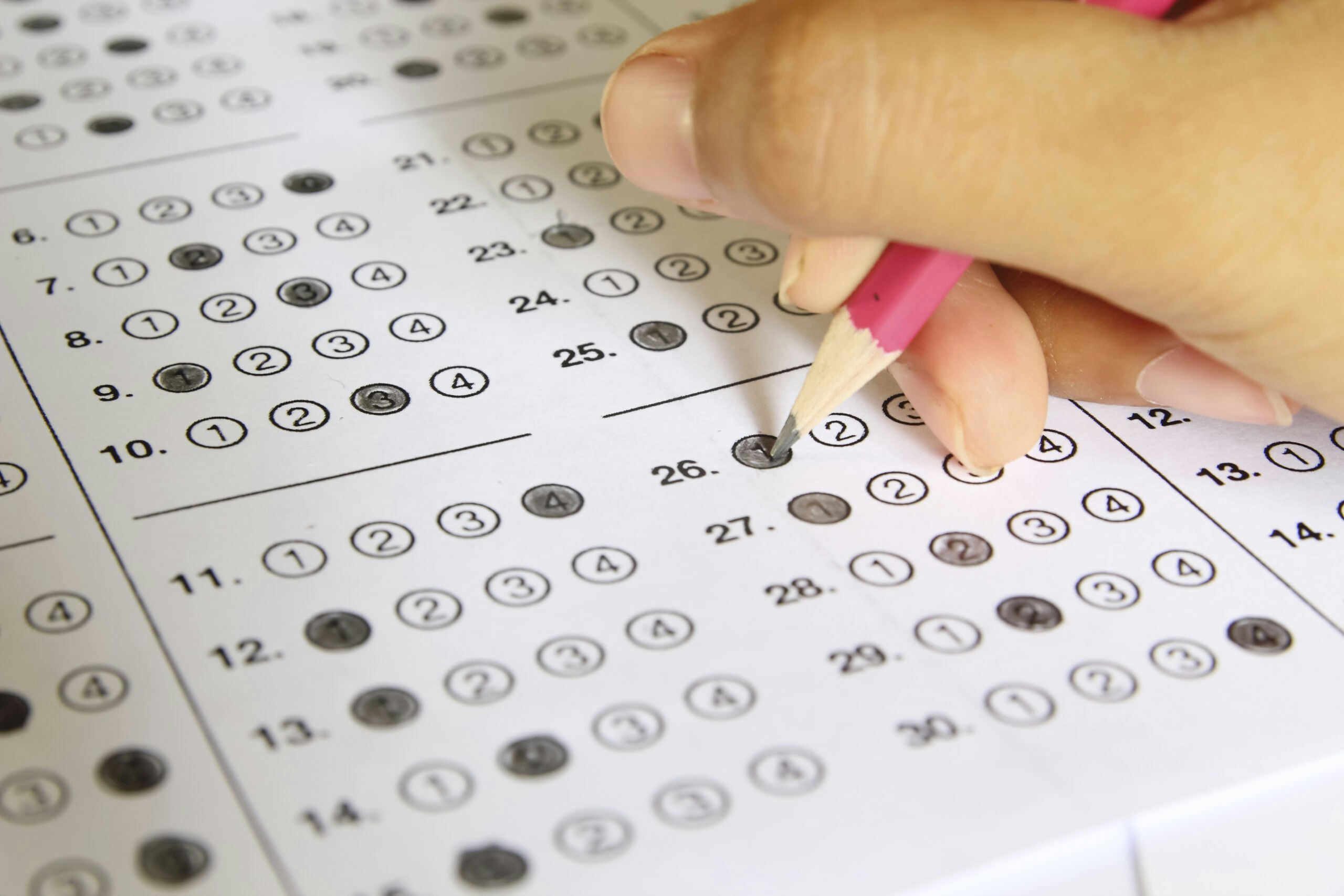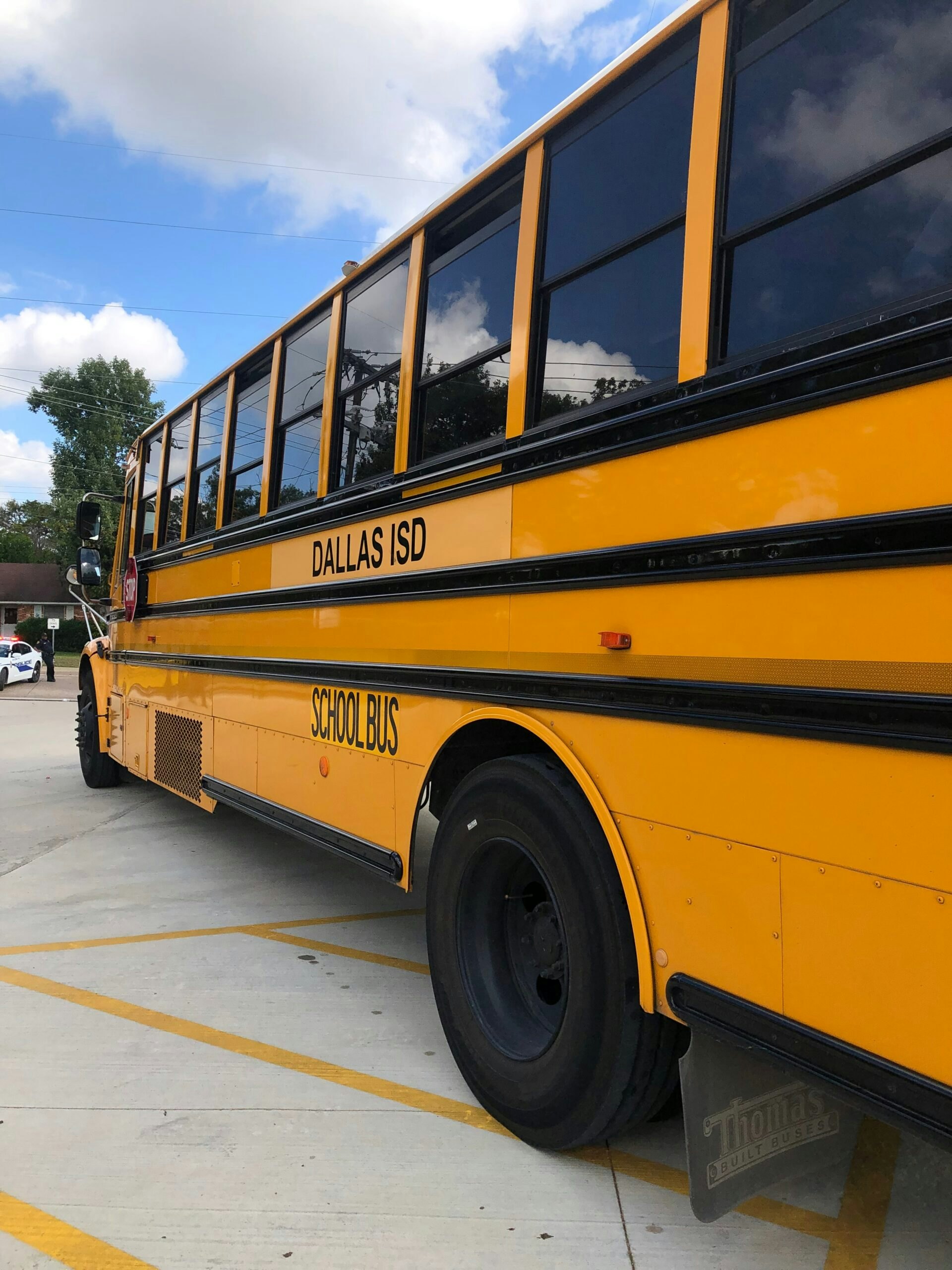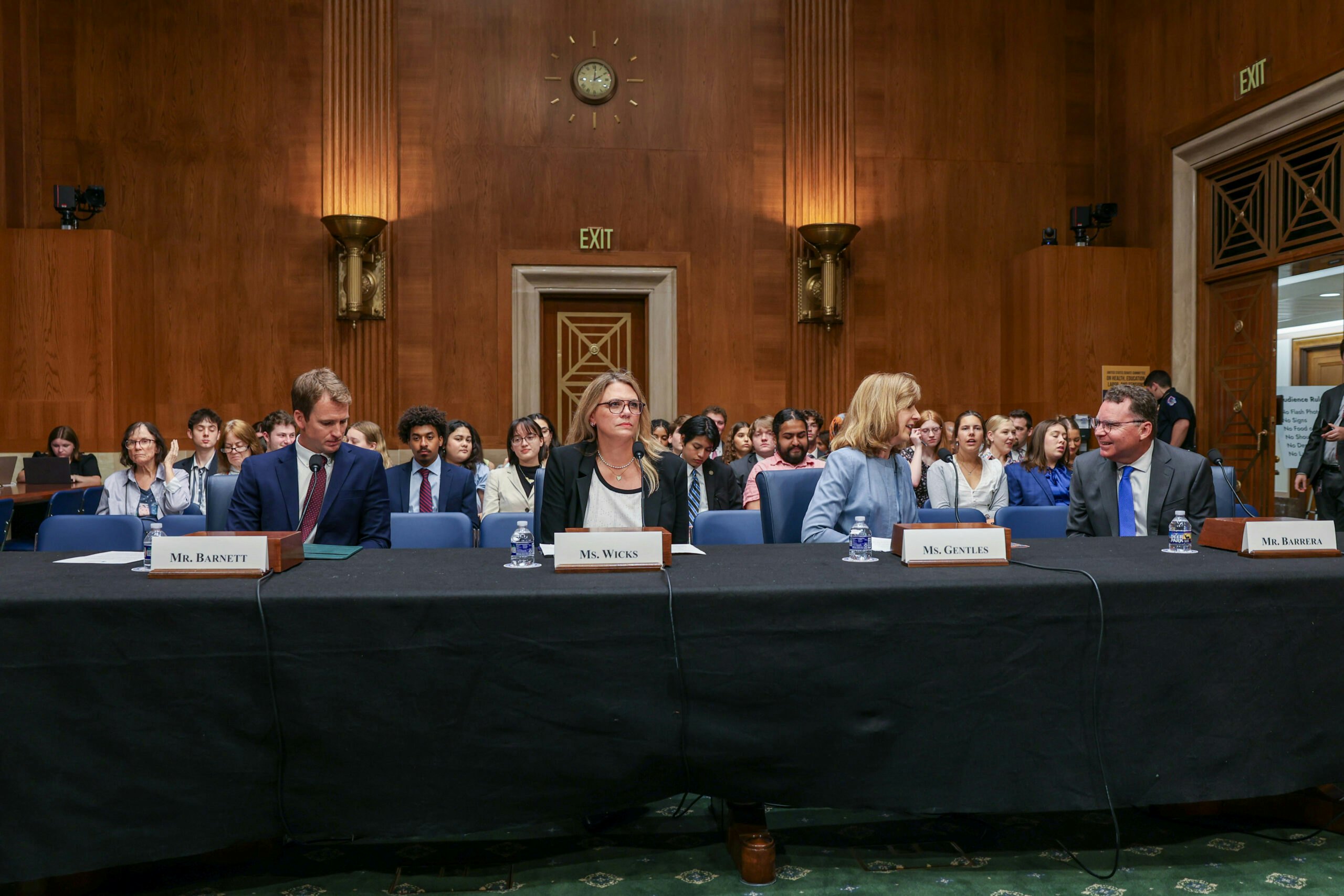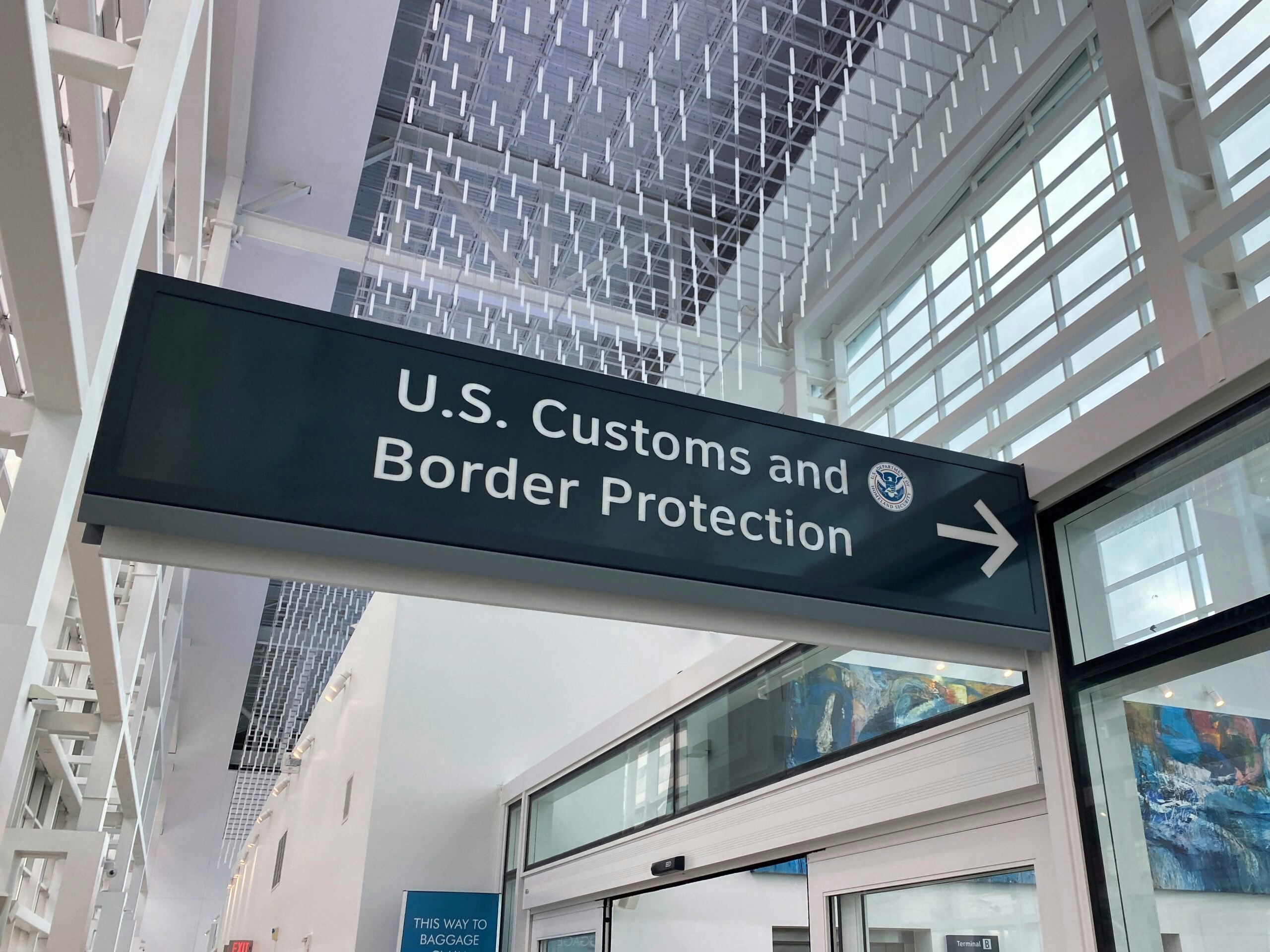Insights from Bush Institute immigration expert Laura Collins
Immigration is important to the Texas economy – 22.6% of the labor force is foreign-born. This group includes legal permanent residents and unauthorized immigrants. The Migration Policy Institute estimates there are nearly 2 million unauthorized immigrants in Texas. MPI defines “unauthorized” to include people who entered the U.S. without authorization, those who overstayed a visa, people with a pending asylum application and those with temporary statuses such as Deferred Action for Childhood Arrivals, parole or Temporary Protected Status. This is broader than what most would consider “undocumented” or people without legal status. Many people with pending asylum cases or temporary statuses have work permits and are legally allowed to remain in the U.S.
Of the nearly 2 million unauthorized immigrants in Texas, 45% have lived in the U.S. for 20 years or more. About 69% are employed, and 29% work in construction. That’s why the Federal Reserve Bank of Dallas’ Texas Business Outlook Survey from October 2025 is concerning. In it, 20% of Texas businesses surveyed said immigration policy changes will hurt their ability to hire foreign-born workers. The share is likely higher – the survey excludes the construction and agriculture industries, which employ many immigrants. The Dallas Fed notes that the chilling effect isn’t driven only by enforcement; the cancellation of legal statuses such as TPS and slower processing for legal immigrants have also contributed.
Federal immigration enforcement still plays a major role. According to The Texas Tribune, 1 in 4 ICE arrests in the first six months of this year occurred in Texas. That’s significant for a state that relies so heavily on foreign-born workers.
Enforcement efforts in Los Angeles and Chicago have understandably drawn more attention. But Texas is the nation’s second-largest economy. The negative outlook in the Dallas Fed survey raises the question of why enforcement in Texas targeting these workers isn’t receiving more scrutiny.
Figure of the Month
1 in 4
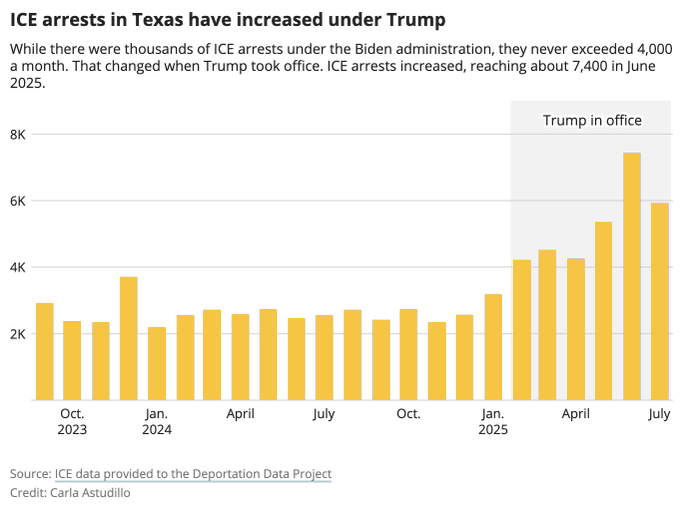
One in four Immigration and Customs Enforcement (ICE) arrests in the U.S. in the first six months of the Trump Administration were made in Texas, according to new data obtained by The Texas Tribune.
Data Dive
- Due process matters. More than 100 federal judges have ruled at least 200 times that the Trump Administration’s mandatory detention of immigrants facing deportation violates the immigrants’ constitutional rights. Judges appointed by every president since Ronald Reagan – including 12 Trump appointees – have ruled against the actions of the administration, once again highlighting the instability of immigration policy made purely in the executive branch rather than through legislation.
What I’m Reading
- ICE agents arrested and detained a teacher at a Chicago day care center as parents were dropping off their children in the morning, AP News reports. Chris Widen, whose 4-month-old is cared for by the employee who was detained, said the operation unfolded at the school “during the busiest drop-off time, where kids and families had to witness a teacher being forcibly removed by agents in tactical gear.” The teacher was later released from custody, but the arrest highlights how American parents rely on immigrants for childcare, where 21% of educators are foreign-born.
- The Department of Homeland Security (DHS) abruptly ended the automatic renewal of some immigrant work permits, potentially putting thousands out of work and sending ripple effects through employers and communities that rely on them. Each year, anywhere between 293,000 and 450,000 people apply for Employment Authorization Document (EAD) extensions.
- The Niskanen Center recently published a blueprint to transform America’s dysfunctional immigration system into a modern, evidence-based tool that advances the national interest. The paper highlights what is working in our immigration system, notes what is broken, and offers practical solutions for an immigration system that works better for America.
- Endocrinologist Dr. Manikya Kuriti and pulmonologist Dr. Vinay Nidadavolu came to the U.S. on H-1B visas and have since been serving patients in small hospitals in rural Kentucky and Indiana, where specialists are hard to come by. Like them, many immigrant doctors help fill critical gaps in the nation’s healthcare system, particularly in underserved rural communities. The administration’s newly announced $100,000 H-1B visa fee, however, now threatens to jeopardize this vital pipeline of medical talent, writes Nada Hassanein in Stateline.
- The U.S. Conference of Catholic Bishops issued a special message on immigrants in the U.S., a statement that must be approved by a two-thirds vote at plenary assemblies of the USCCB. The message calls for “meaningful reform” of U.S. immigration laws. “Human dignity and national security are not in conflict. Both are possible if people of good will work together.”
- ProPublica went back to the Chicago apartment complex that was the target of a large-scale middle of the night immigration raid last summer. The piece provides a balanced view of a tough topic. Reports of drugs and other crime were rampant, but many of the immigrants rounded up in the raid were never charged with a crime before being removed.
Bush Institute Insights
- What does effective border policy look like in the U.S.? How does immigration benefit the U.S. economy? I answered these questions over a cup of coffee with Bush Institute communications manager Nicole Hawkins.
Upcoming Events:
- December 1, 2025 – American Enterprise Institute: U.S. Asylum Policy: Defend It, End It, or Mend It?
- January 22, 2026 – Hoover Institution: Immigration Policy and the Economics of Innovation











